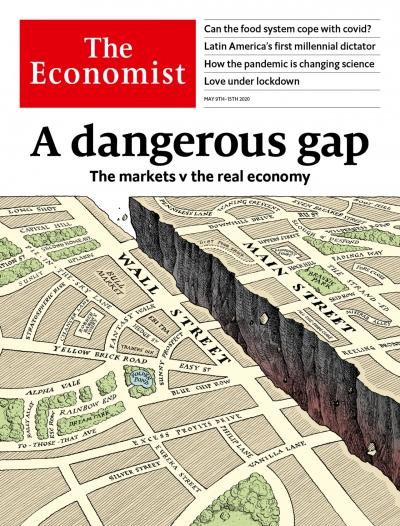Bad Look Of High Stock Prices & High Unemployment
In less than an hour, the BLS will release the employment situation for April, which will illustrate the devastation the COVID crisis has inflicted on the U.S. labor market. Since the crisis began 30 million plus American workers have filed for unemployment insurance, which is about 20 percent of the 150 million workforce.
Not all 30 million will show up in this morning’s number due to lags in how the data is gathered. We expect the unemployment rate will probably peak in the May report and gradually begin to recover. All bets off if the country is hit with a second wave of COVID infections and deaths.
Today’s Unemployment Rate Reflects A Closed Economy
Though we are very empathetic to those who have lost their jobs, we are also cognizant that many of the 30 million unemployed will return to work once the economic reopening accelerates and what really matters is how much long-term damage has been done to the economy and American labor force. Nobody knows for certain as we are all engaged in a guessing game, which will probably be the case until the economic fog begins to burn off in the fall.
There will likely be an initial burst of economic activity due to a huge pent-up demand as America opens for business but the long-term reality will be determined by how much damage and hysteresis the lock-down has inflicted.
Hysteresis in the field of economics refers to an event in the economy that persists into the future, even after the factors that led to that event have been removed.
Stocks seem to be expecting a fairly rapid return to normal as the S&P is only a little over less than 10 percent from it’s all-time high. We are not so sanguine and our priors are the unemployment rate will linger in the low double-digit range for sometime.
A high stock market and double-digit unemployment is not a good look going into the November presidential election, especially for President Trump, who derives much of his support from his populist and anti-elitist rhetoric.
Top 10 Percent Of Households Own 88 Percent Of Stock Wealth
The elites, or let’s say the Top 10 percent of households, for example, own 88 percent of stock market wealth. See our post, Why The Stock Bull Is A Big Meh For Most Americans.
And a stock market clinging close to its highs with an unemployment rate that has nearly tripled will reopen the wounds of the Great Financial Crisis (GFC) that the “fat cats” were once again bailed out at the expense of Main Street.
The same toxic politics – but this time on steroids – which helped Trump get elected in 2016.
“This is the second time we’ve bailed their asses out,” grumbled Joe Biden, the Democratic presidential candidate, last month. The battle over who pays for the fiscal burdens of the pandemic is just beginning. On the present trajectory, a backlash against big business is likely…
The most overlooked risk is of a political backlash. The slump will hurt smaller firms and leave the bigger corporate survivors in a stronger position, increasing the concentration of some industries that was already a problem before the pandemic. A crisis demands sacrifice and will leave behind a big bill. The clamour for payback will only grow louder if big business has hogged more than its share of the subsidies on offer. It is easy to imagine windfall taxes on bailed-out industries, or a sharp reversal of the steady drop in the statutory federal corporate-tax rate, which fell to 21% in 2017 after President Donald Trump’s tax reforms, from a long-term average of well over 30%. Some Democrats want to limit mergers and stop firms returning cash to their owners.
Moreover, a narrative is beginning to take shape that the Trump administration and his Republicans are more of a Trojan Horse for the 1 percent and Greenwich set. That is, tax cuts for the wealthy and large corporations while cutting social services and healthcare for the middle class and pumping up and bailing out stocks at the expense of Main Street, where the top 10 percent directly hold almost 90 percent of total stock wealth while the bottom 90 percent have only a little over 10 percent.
At the same time, the Trump administration presents itself as sort of a dysfunctional Honey Boo Boo reality show to entertain its base. Though what some may perceive as a nice circus act but not quite exactly the savior of the working and middle class that many voted for.
Finally, today’s cover of The Economist pretty much nails it and also frets how divorced financial markets are from the current and coming economic reality.
Tyler Durden
Fri, 05/08/2020 – 07:58
via ZeroHedge News https://ift.tt/2AbmB8D Tyler Durden
